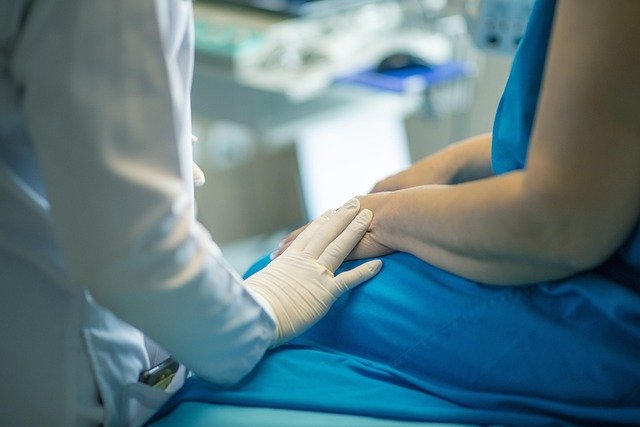Body Contouring Explained: Modern Fat Removal Options
Explore today's fat removal solutions and discover which body contouring options best address stubborn pockets of fat. From non-surgical Cryolipolysis procedures like CoolSculpting to ultrasound, radiofrequency, laser treatments, and injectable fat dissolvers, learn how each method works, typical costs, and what to expect during recovery. Get practical guidance to choose a treatment that fits your goals and lifestyle.

Body Contouring Explained: Modern Fat Removal Options
How CoolSculpting Works
CoolSculpting is a non-surgical approach that uses controlled cooling to reduce localized fat. The technology, known as cryolipolysis, targets fat cells beneath the skin and freezes them without harming the surrounding tissues. Once the fat cells crystallize, the body gradually breaks them down and removes them through natural metabolic processes. Noticeable changes usually appear over several weeks as the treated tissue is processed and cleared by the body.
The procedure is performed with an applicator that suctions and cools the targeted area. Sessions are often comfortable enough for patients to read, work, or relax. Side effects are generally mild and temporary, including redness, swelling, numbness, or tenderness around the treated site. For many people, CoolSculpting is most effective for smaller, stubborn deposits on the abdomen, flanks, thighs, and under the chin.
Most Effective Body Contouring Methods
There is no single best method for everyone. The ideal treatment depends on the size, location, and nature of the fat deposit, as well as the patient’s goals and anatomy. Common options include:
-
Ultrasound-based treatments: These deliver targeted sound waves that disrupt fat cells. They can reach deeper layers and are often used for moderate fat reduction and skin tightening.
-
Radiofrequency procedures: Radiofrequency energy heats fat and surrounding tissue, encouraging collagen production and tissue contraction while also reducing fat volume over time.
-
Injectable fat dissolvers: Substances injected into small areas can break down fat cells chemically. These are typically used for focused regions such as a double chin.
-
Laser-assisted fat reduction: Laser devices can liquefy fat or stimulate tissue remodeling, sometimes combined with suction techniques in minimally invasive procedures.
Each modality brings distinct advantages. For example, cryolipolysis and injectables are attractive because they avoid incisions, while energy-based devices like ultrasound and radiofrequency may offer simultaneous skin tightening. Your provider can recommend the best option after assessing the treatment area, skin quality, and expectations.
Can Fat Reduction Support Long-Term Weight Loss?
Fat removal procedures are designed to reshape the body rather than serve as comprehensive weight-loss strategies. They are most beneficial for individuals who are already close to their target weight but have resistant pockets of fat that do not respond to diet and exercise. Because the treatments reduce the number of fat cells in treated areas, those cells do not return; however, remaining fat cells can expand if you gain a significant amount of weight.
To preserve and maximize results, patients should adopt sustainable habits: balanced nutrition, regular physical activity, and maintenance of a stable weight. Treating multiple areas or combining modalities may be considered for broader contouring needs, but none of these approaches replace a holistic plan for weight control and overall health.
Costs and Options for Fat Removal Treatments
Below is a general overview of typical price ranges and session estimates. Actual costs will vary depending on clinic location, provider expertise, and the size of the area being treated.
| Treatment Type | Average Cost Range | Sessions Needed |
|---|---|---|
| CoolSculpting | $2,000-$4,000 | 1-3 |
| Ultrasound Treatment | $1,500-$3,000 | 2-4 |
| Radiofrequency | $1,000-$2,500 | 4-6 |
| Injectable Solutions | $1,200-$1,800 | 2-4 |
Prices, rates, or cost estimates mentioned in this article are based on the latest available information but may change over time. Independent research is advised before making financial decisions.
When comparing costs, consider the total package: pre-treatment consultation, number of areas, follow-up appointments, and any combined therapies. Some clinics offer financing or package pricing for multi-area treatments.
What to Expect After Treatment
Results typically develop gradually. Depending on the technique, visible improvement can appear anywhere from a few weeks to several months after treatment as the body clears treated fat cells. Recovery is generally quicker and easier with non-surgical and minimally invasive options, with most patients returning to normal activities within days.
Common post-treatment experiences include bruising, tenderness, temporary numbness, or swelling at the site. Providers may recommend gentle massage, compression garments, or short-term activity modifications to support healing and contouring. Follow-up visits allow assessment of progress and determination of whether additional sessions are needed to reach the desired outcome.
Choosing the Right Provider and Setting Expectations
Research board-certified clinicians or licensed professionals with experience in the modality you’re considering. Look for before-and-after photos, patient reviews, and a clear explanation of risks and expected outcomes during your consultation. A good provider will tailor a plan to your anatomy, skin laxity, and aesthetic goals, and discuss alternatives if a different approach would be safer or more effective.
Keep realistic expectations. Fat reduction procedures can produce meaningful contouring, but they are not a guarantee of perfection. The best outcomes arise when technology is paired with sensible lifestyle habits and honest communication with your clinician.
This article is for informational purposes only and should not be considered medical advice. Please consult a qualified healthcare professional for personalized guidance and treatment.






